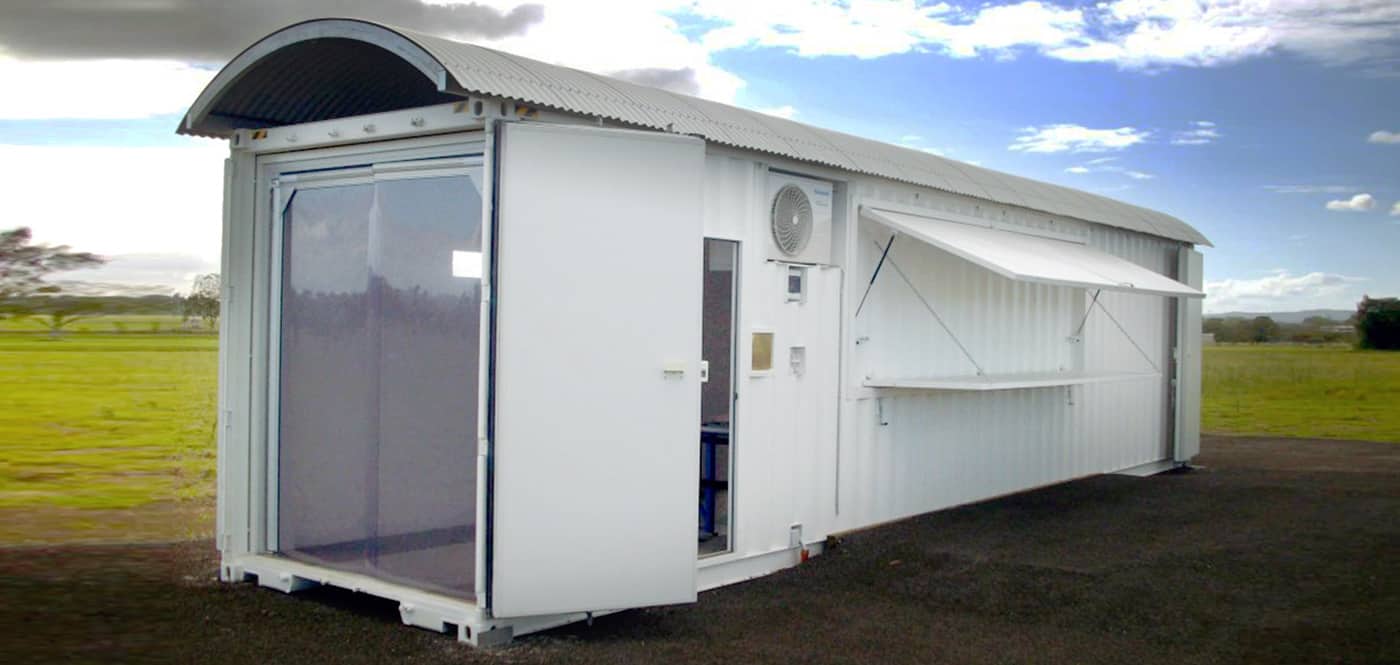Shipping containers are a popular, economical choice for people building homes or offices. Durable, long-lasting and affordable, containers can be converted into a functional space used for both residential and commercial purposes. A shipping container shop, or workshop, is one of the most in-demand uses of the shipping container.
COMPARE PRICES & SAVE
Benefits of Building Your Own Shipping Container Shop?
The Conex box, or shipping containers that we know today, offer numerous benefits when building a shop. Key benefits of a shipping container workshop are:
- Security. Shipping containers are built to last across multiple trips on the ocean. The high-grade steel makes these containers fireproof, weatherproof, watertight and wind resistant. While possible for someone to break in, it’s much more difficult to gain access to a shipping container than a standard garage or workshop.
- Portable. If you ever have the need to move a shipping container, you can. The structural durability of the container allows them to be placed and moved as necessary. If you’re using the container for a commercial shop and need to relocate, it won’t be an issue. Some companies are moving containers at large scale because they rent them to consumers or businesses and relocate them often.
- Cost-effective. You have multiple options when building a shop, but a container shop is one of the least expensive options available. These shops are built for shipping items across the ocean, and when they reach the end of their usefulness, they’re purchased and resold. A lot of the units for residential and commercial use have only been on one trip, but this is something you’ll need to verify with the supplier. Costs can range from $1,000 to $6,000+ a container – far less expensive than a stick-built shop.
- Customizable. Containers can be customized with relative ease. The container has all of the essentials: ceiling, floor and walls. Cutting out windows, doors, adding electric and even joining containers together is common. You can do anything with a container shop that you could do with a stick-built shop. Plus, you’ll enjoy a structure that is more durable and resistant to weather and fire.
Mr. Box Shipping Container Workshop Conversion
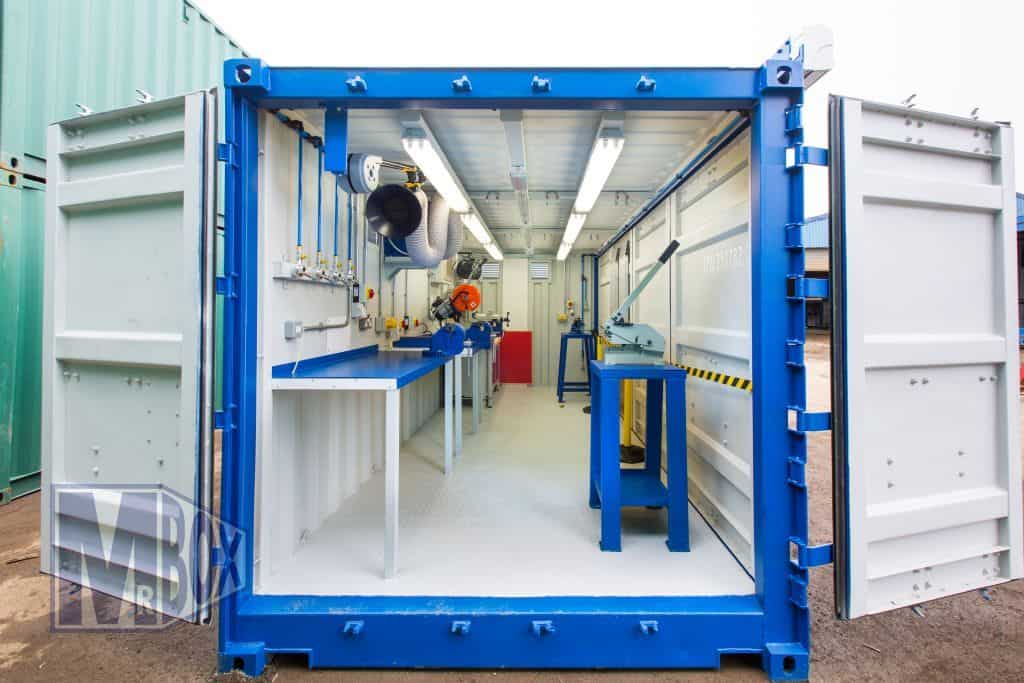
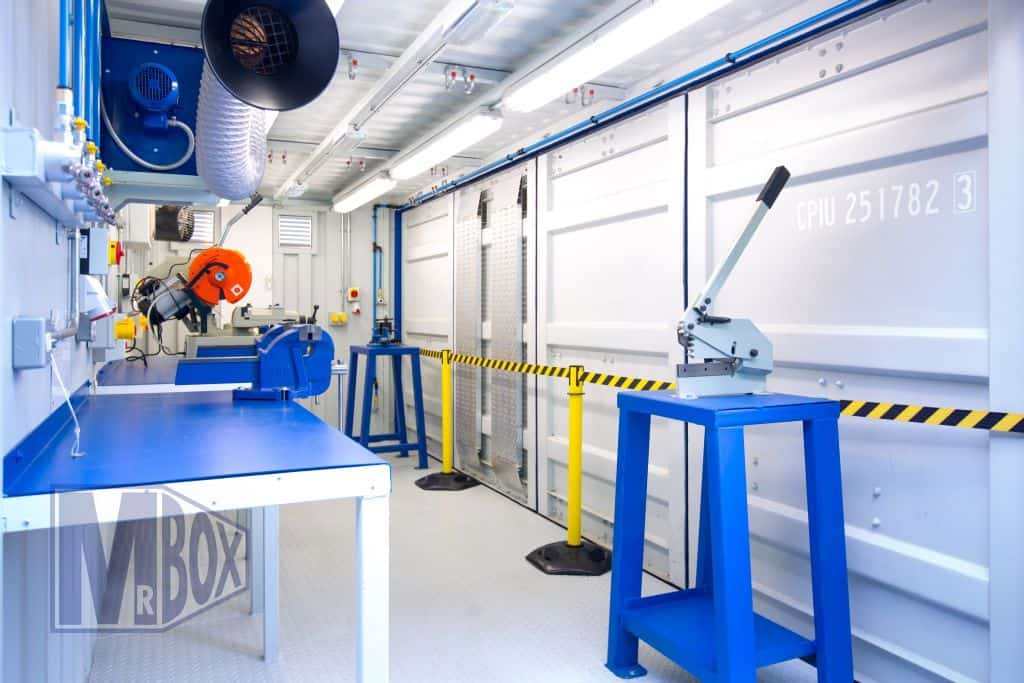
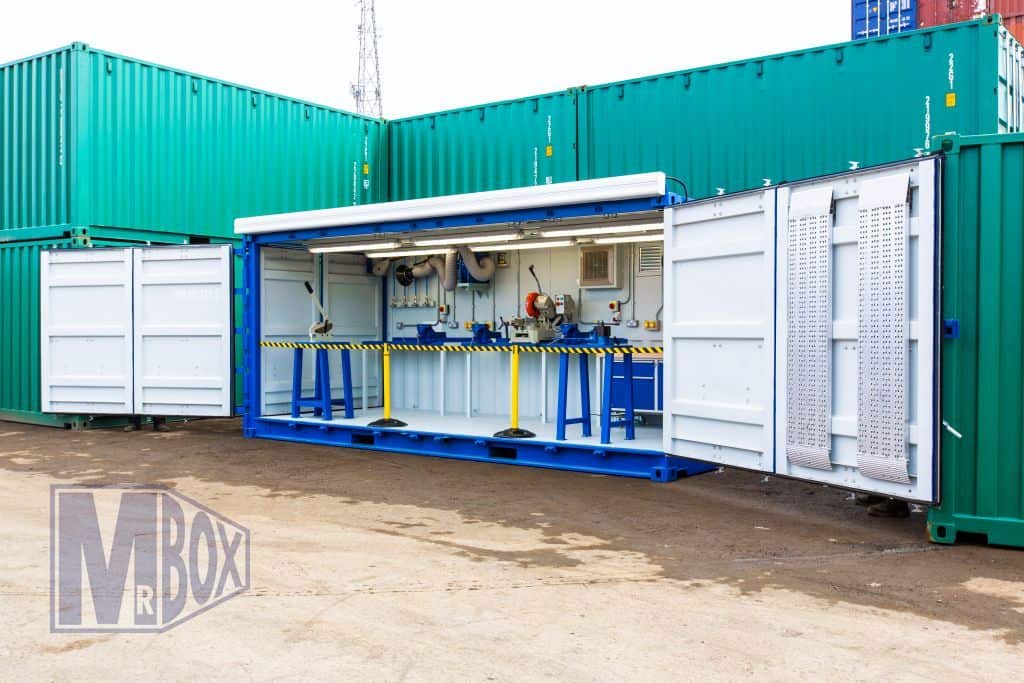
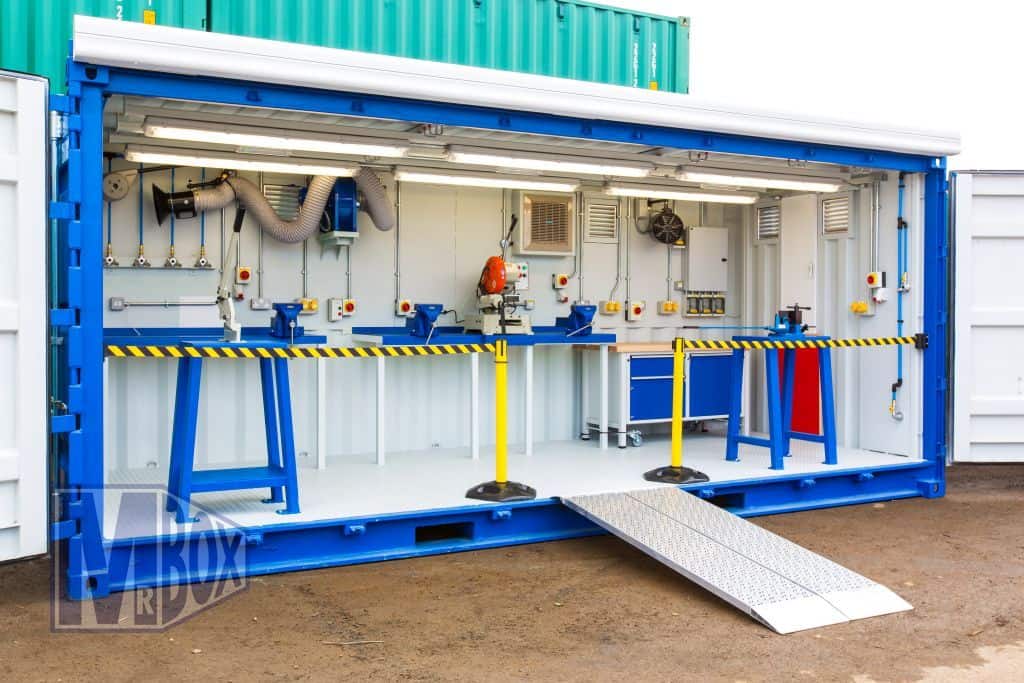
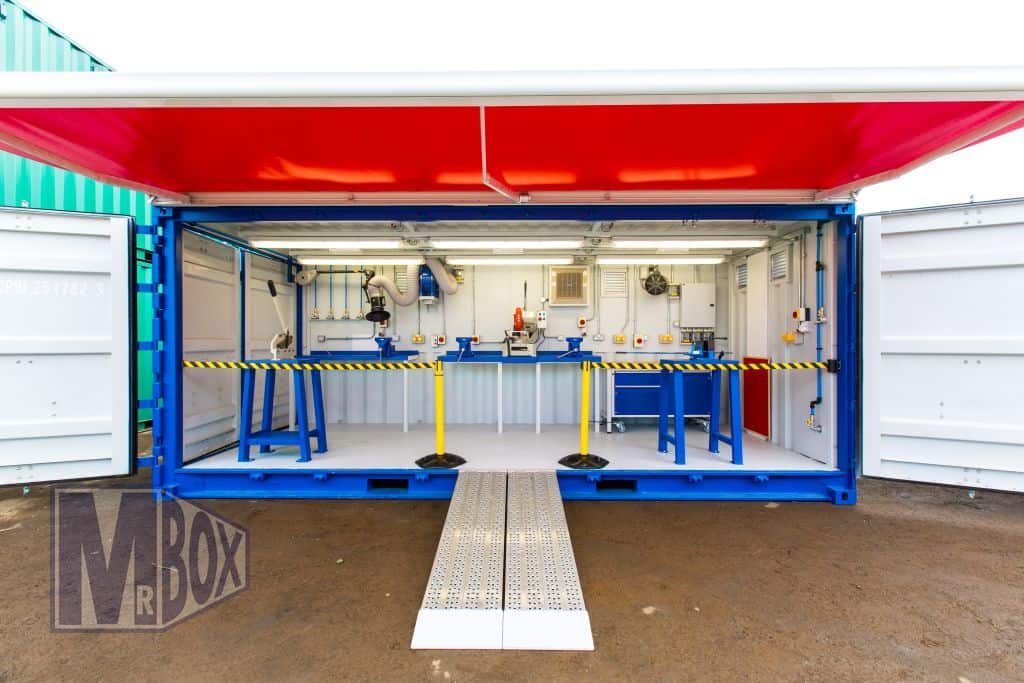
Understanding Container Quality and Pricing Options
When you go to purchase a storage container, you’ll notice that there is a wide pricing range. The range comes from numerous factors:
- Category. The category, or condition, is assigned to the container based on its current condition. The category is derived from looking at the container’s history, damage, repairs, miles traveled and current condition. Every container will have some wear and tear, but the supplier will provide you with this information upfront.
- Shipping is different than storage. Shipping containers are built to meet high International Standards Organization (ISO) regulations. The ISO makes sure that the safety and consistency of a shipping container meets guidelines. Storage units do not need to meet this same high level of standards. In the ideal case, a shipping container is chosen because they have very high levels of durability that allow them to be stacked and hold far more weight than their storage counterparts.
- Inspection. Suppliers will conduct a personal inspection of a container to look for any defects or issues that the container may have. It’s important to work with a supplier that has strict inspection qualities.
Container categories also exist that are factored into the price of the container. The categories and their respective pricing are:
- One-tripper. A one-tripper is shipped from China to its end destination. These high-quality units cost between $3,000 and $5,000 each, and may come with handles, doors, lockboxes and flooring,
- Cargo worthy. A container that has been inspected and will have its price vary based on numerous factors: age, miles traveled and condition. These units are often less expensive than a one-tripper.
Surveys are performed on all containers over five years of age. The survey requires a thorough inspection to make sure that the container is still cargo worthy. From the date of being manufactured, a shipping container is deemed cargo worthy for five years.
Afterwards, an inspection will be what deems a container cargo worthy or not.
Now that you understand the benefits of a shipping container workshop and how the containers are priced, it’s time to look at the conversion process.
How to Convert a Shipping Container into a Workshop
Some homeowners choose to convert their own containers, while others will pay someone to do the conversion for them. The nice thing about a shipping container shop is that you can use one or more containers to make your shop as large or small as you would like.
Joining two, or more, containers together is easy, and a lot of people will opt to keep their containers separated and put a steel roof over them.
This alternative allows you to park a car or other vehicle under the roof or to drive right up to the entryways.
A few key points to remember when building your own shipping container shop are:
- Interior spaces can get hot, especially in warmer regions, so installing interior fans or some sort of cooling system is recommended
- Containers can be placed on unpaved grounds, but a concrete slab will provide additional stability
- Anchoring the four corners of the container is recommended and may be required depending on local codes
- You can insulate the interior, which is what many builders recommend in cooler climates
Shipping container workshops are versatile, so it’s possible to truly make them your own. Due to the strength of the container and no interior beams required, the interior is open, while the walls can have anything added from a full-length widow or folding door to multiple windows or doors.
A few of the many design features that can be added to the workshop are:
- Bathrooms
- Benches
- Doors
- Electric
- Lighting
- Plumbing
- Shelving
- HVAC systems
- Windows
Suppliers can also work with you to provide any customization or features that you need for your shop. And sizing shouldn’t be an issue either. The typical size options for a shipping container are:
- 8-feet wide
- 8.5 feet tall (9.5 feet options may exist)
- 20-foot long containers
- 40-foot long containers
When you contact a supplier, you may have the option to choose from alternate lengths and a variety of unique layouts. You also have the option of taking the entire project on by yourself so that you can create a workshop to your specific specifications.
You can join or stack the containers to make them multi-level or more spacious.
Workbenches can be anchored into the steel framing, allowing for space-saving options. You can also add in a small container for additional storage space, which is a common addition to many workshops.

